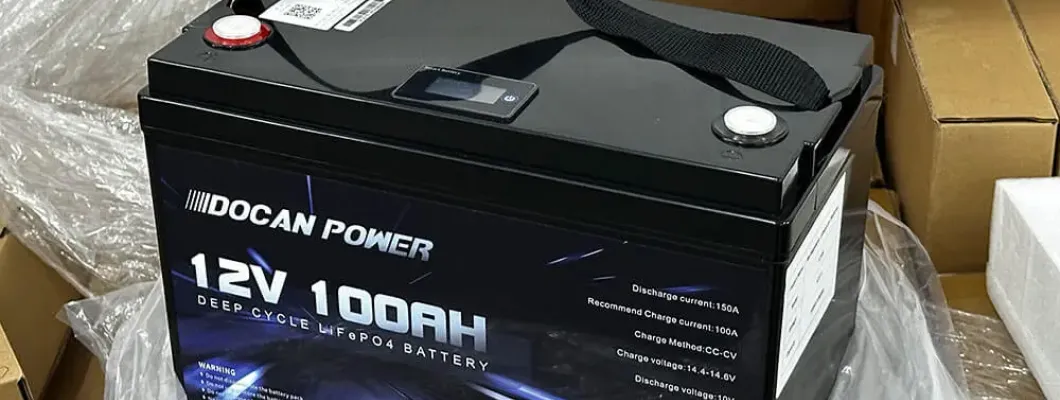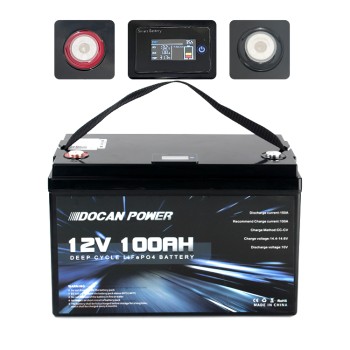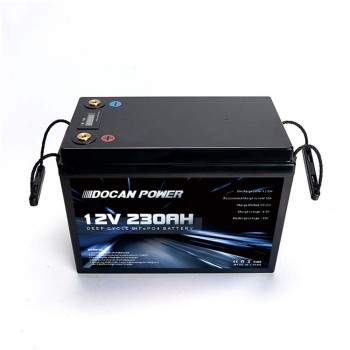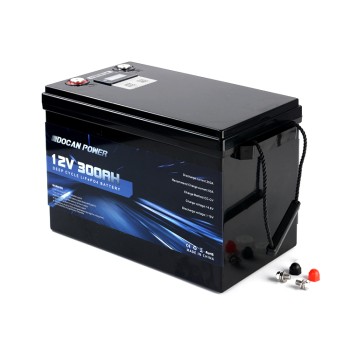
Lithium battery packs, particularly those utilizing LiFePO4 (lithium iron phosphate) technology, are revolutionizing energy storage with their safety, longevity, and efficiency. These packs are critical for applications like electric vehicles, renewable energy systems, sailboats, and golf carts. This article delves into the technology behind LiFePO4-based lithium battery packs, their operation, and their key uses, spotlighting a specific example: the 12.8V 300Ah 3840Wh 4S1P pack with a JBD 12V 200A BMS.
What Are Lithium Battery Packs?
A lithium battery pack is an assembly of lithium-ion cells configured to meet specific power needs. We’re focusing on LiFePO4 packs, prized for their stability and durability. Consider the 12.8V 300Ah 3840Wh 4S1P pack with a JBD 12V 200A BMS as a prime example. This pack combines four high-capacity LiFePO4 cells with advanced management, featuring:
- LiFePO4 Cells: Each delivers a nominal 3.2V with exceptional thermal resilience.
- JBD 12V 200A BMS: A robust battery management system handling up to 200A continuous current, ensuring safety and balance.
- Thermal Management: Often passive cooling for this size, maintaining optimal temperatures.
- Housing: A durable shell protecting against environmental stress.

Key Parameters: Voltage, Capacity, and Energy
The "12.8V 300Ah 3840Wh 4S1P" specs break down as follows:
- Voltage (12.8V): The "4S" indicates four cells in series, connected positive-to-negative. Each LiFePO4 cell’s 3.2V stacks up: 4 × 3.2V = 12.8V, a standard replacement for 12V systems. The JBD 200A BMS caps charging at ~14.6V (3.65V per cell) and discharging at ~10V (2.5V per cell), keeping the pack within safe limits.
- Capacity (300Ah): The "1P" means no parallel grouping—just one set of four cells. Each cell here is 300Ah, so the pack’s total capacity is 300Ah. In a 4S2P setup, capacity would jump to 600Ah, but voltage would stay 12.8V. This 300Ah rating supports high-demand loads, like delivering 200A for 1.5 hours (with the BMS’s 200A limit).
- Energy (3840Wh): Energy is voltage × capacity: 12.8V × 300Ah = 3840Wh. This pack can supply 3840W for 1 hour or 38.4W for 100 hours, adjusted for LiFePO4’s ~95% efficiency. The JBD BMS optimizes this by preventing over-discharge.
The JBD 12V 200A BMS enhances this pack’s utility, supporting high-current applications (e.g., 200A motors) while balancing cells and protecting against short circuits or overcharging. LiFePO4’s resistance to thermal runaway—stable up to 60°C—makes this 3840Wh pack a safe, long-lasting choice.
How Lithium Battery Packs Work
LiFePO4 lithium battery packs rely on an electrochemical process. In the 12.8V 300Ah 4S1P pack, each cell’s lithium iron phosphate cathode and graphite anode exchange ions via an electrolyte. During discharge, ions move from anode to cathode, generating a 12.8V output. Charging reverses this at ~14.4V, storing 3840Wh for later use.
LiFePO4’s stable chemistry minimizes risks like thermal runaway, even under heavy loads (e.g., 200A via the JBD BMS). The BMS:
- Monitors each cell’s 3.2V.
- Ensures safe charge/discharge thresholds (14.6V/10V total).
- Balances the series-connected cells for uniform performance.
Thermal management—typically air-based for a 3840Wh pack—handles heat at high discharge rates (e.g., 0.67C, or 200A). This design delivers reliability and efficiency.
Best Practices for Lithium Battery Pack Maintenance
Caring for your LiFePO4 lithium battery pack isn’t rocket science, but it’s key to maxing out its life. Here’s how to do it right, with terms you’ll spot on your gear.
Charge Smart with SOC
Keep the State of Charge (SOC) at 50-80% for storage. SOC’s your battery’s fuel gauge—100% looks full, but holding it there long-term stresses cells, shaving off cycles. Deep discharges below 20% DOD (Depth of Discharge) aren’t great either; they wear out the chemistry faster. Aim for that middle ground—say, charging to 80% and stopping discharge at 50%—and your pack stays happy. Most chargers or BMS displays show SOC, so use it to guide you.
Mind the Temperature Range
Operate between 0°C and 45°C—LiFePO4’s sweet spot. Push past 60°C, and the electrolyte starts breaking down, cutting capacity. Below 0°C, ion flow slows, dropping output by up to 20%. Check your pack’s spec sheet for its max temp (often labeled Tmax); if you’re in extremes, add insulation for cold or ventilation for heat. Store it cool and dry—think a garage shelf, not a blazing attic.
Lean on Your BMS
Your Battery Management System (BMS) is the brains—don’t ignore it. It balances cells, caps overvoltage (like 3.65V per cell), and stops shorts. Dig deeper into its magic with "LiFePO4 with BMS: A Comprehensive Guide". Check its status monthly—look for BMS fault codes or alerts (e.g., “OVP” for overvoltage protection) on its display or app. If it flags a cell imbalance (say, one at 3.4V, another at 3.2V), let it run a balance cycle—most do this automatically. A glitchy BMS? Swap it fast to avoid uneven wear. For example, in a solar-powered home setup, a JK Inverter BMS paired with an energy storage cabinet can manage power flow seamlessly, ensuring your LiFePO4 pack supports everything from household appliances to communication base stations or even industrial equipment, as shown in the diagram below.

Inspect and Test
Get hands-on yearly. Spot swelling (a bulging case) or corrosion (greenish crust) on terminals—early signs of trouble. Test capacity with a charger or load tester; if it’s below 70% of rated Ah (amp-hours), cells might be aging out. For a 100Ah pack, dropping to 70Ah means it’s still usable but fading. Clean terminals with a dry cloth if dusty—moisture’s the enemy here.
Store Like a Pro
For long-term storage, set SOC to 50-60% and park it in a dry, shaded spot—20°C is ideal. Full charge risks voltage creep; fully drained invites sulfation-like decay. Check SOC every 3 months; if it dips below 20%, top it up to 50%. A stable environment keeps your pack primed for action.
Conclusion
LiFePO4 lithium battery packs offer excellent safety, durability, and efficiency for applications like electric vehicles and renewable energy systems. By understanding key specs and following proper maintenance, users can ensure long-lasting, reliable performance. With the growing demand for safe energy storage, LiFePO4 technology is set to play a key role in the future of energy solutions.






Leave a Comment